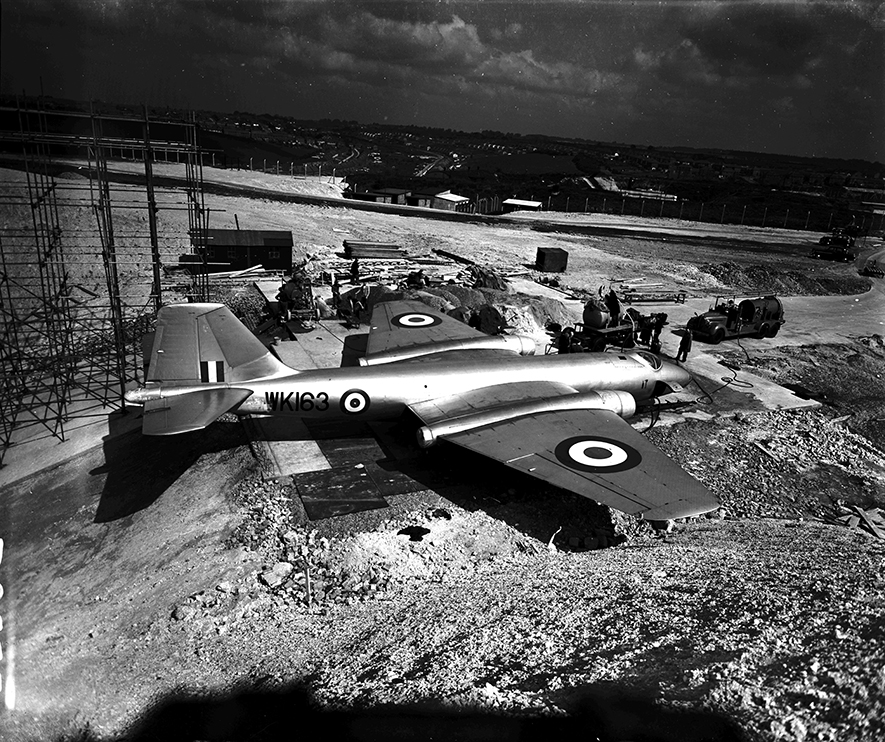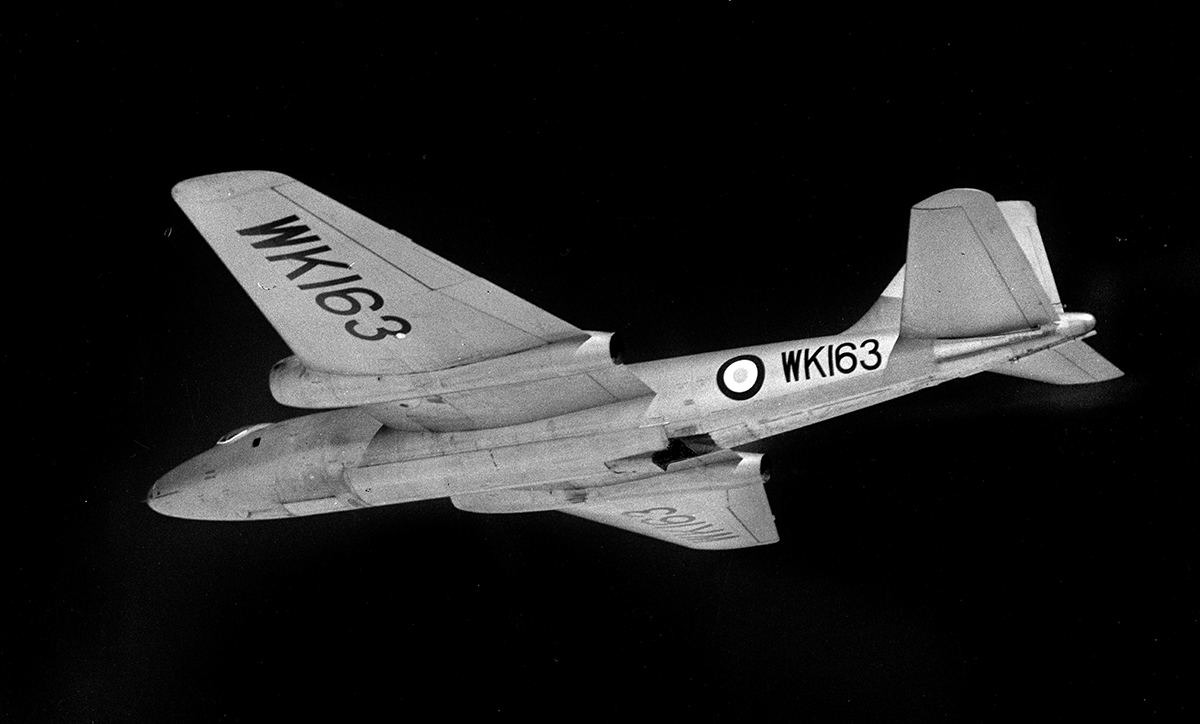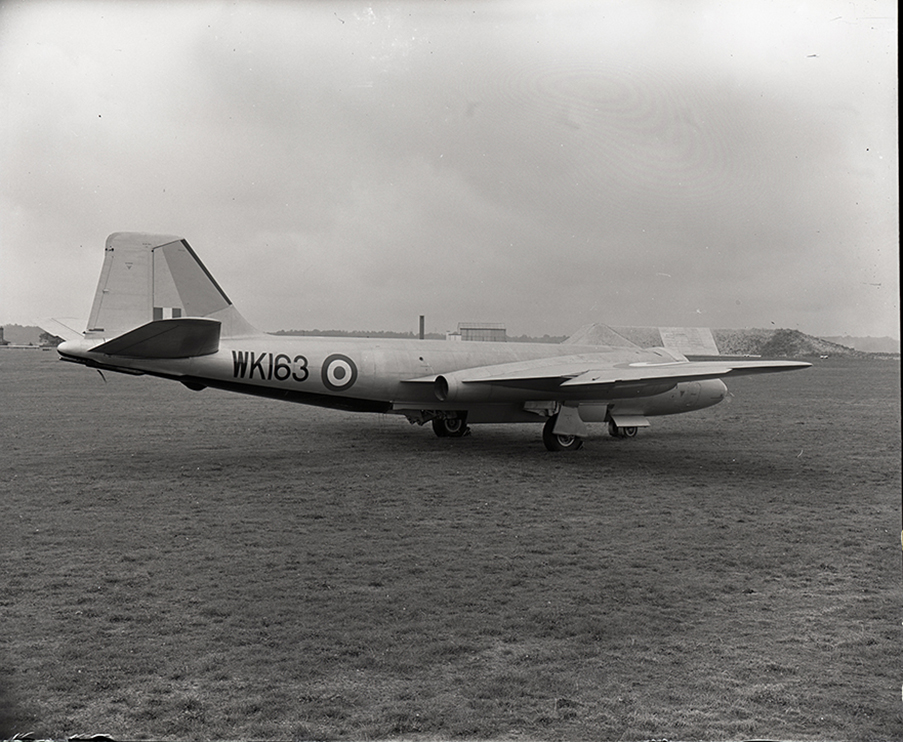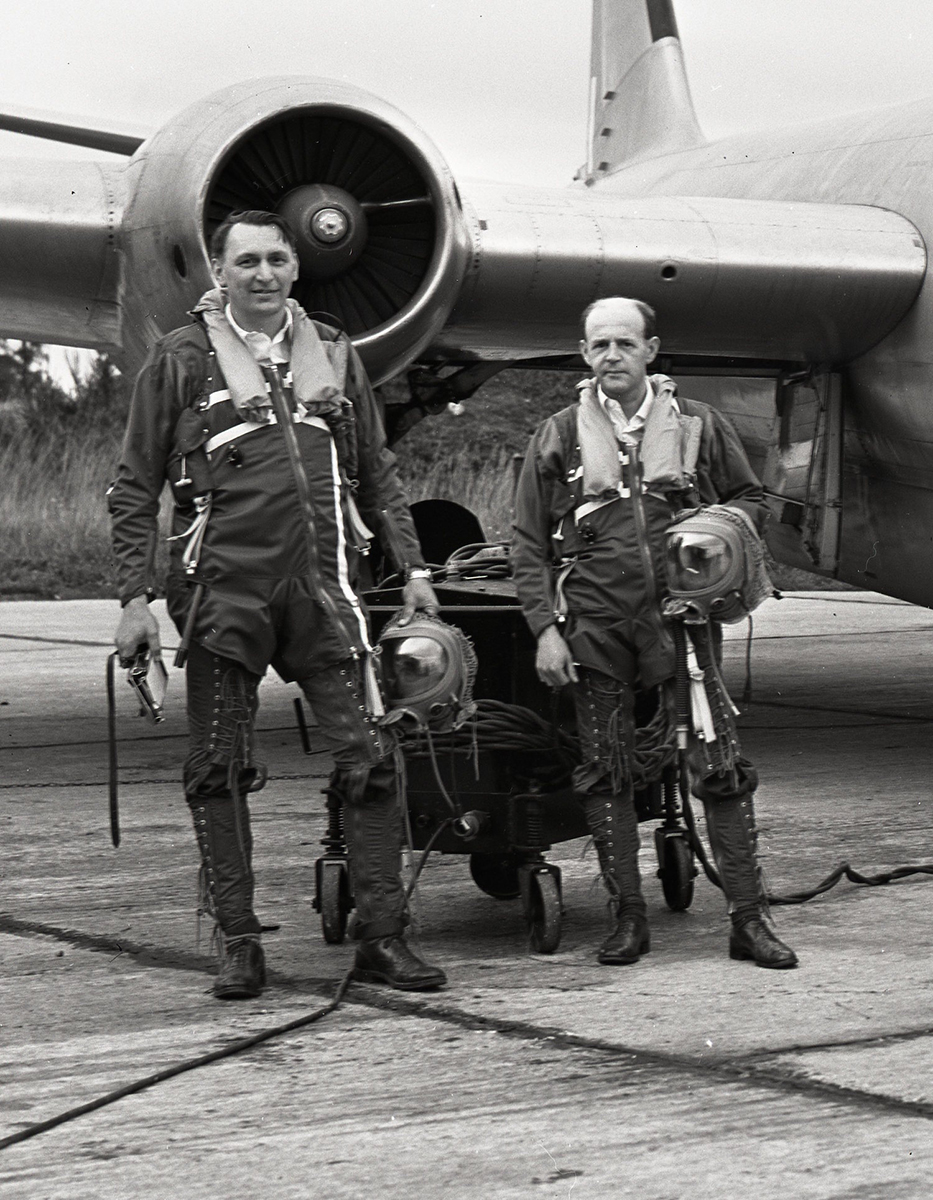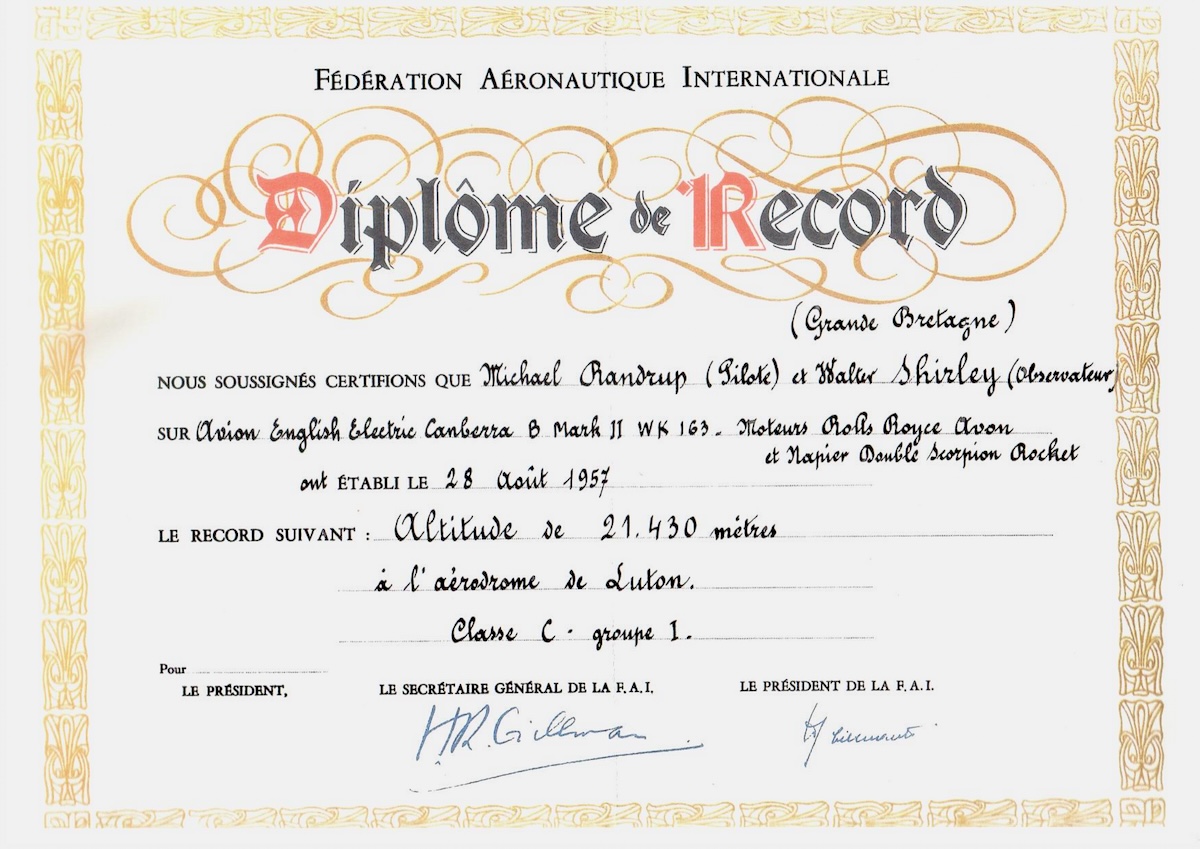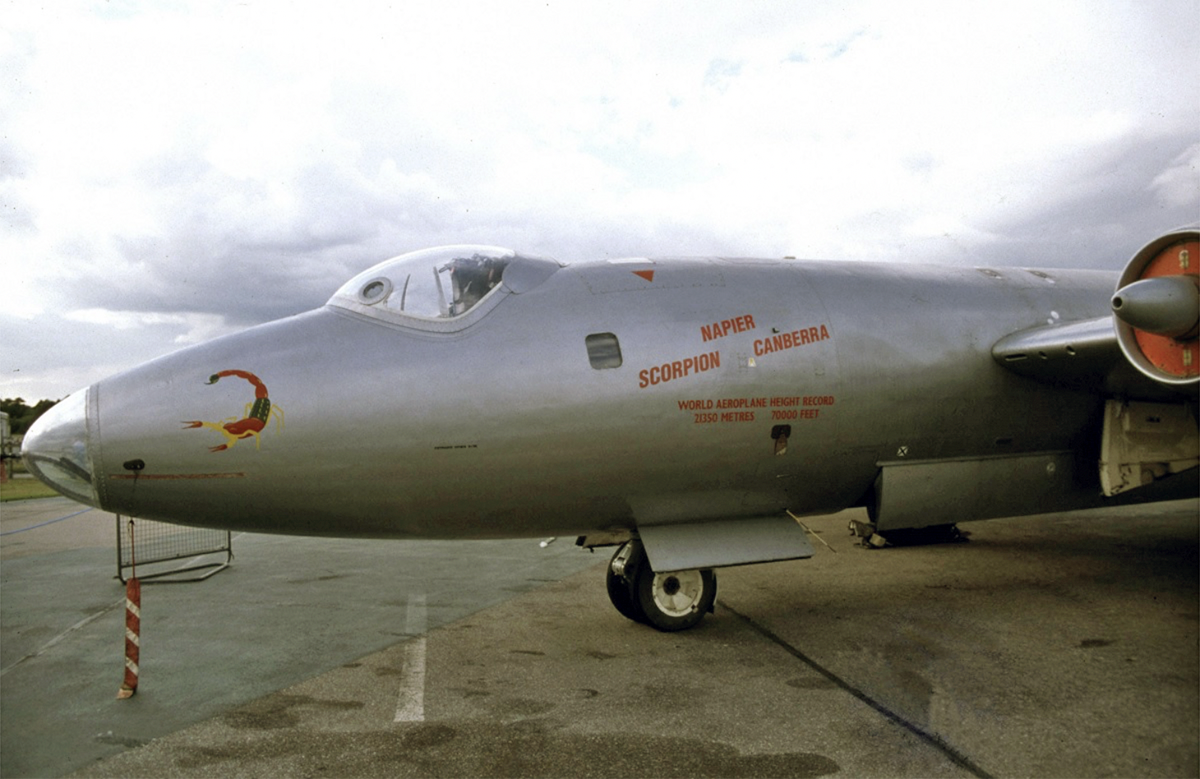Randrup was accompanied by Walter Shirley, Deputy Chief Engineer of Napier’s Flight Development Establishment, which was responsible for the design and development of the Scorpion rocket engines. They took off from Luton, home of the F.D.E., late in the afternoon and headed for Portland Bill, on the South Coast. They then turned east where, at 44,000′, a few miles south of the Isle of Wight they turned north-east, at the same time bringing the ‘Double Scorpion’ into action. Three minutes later they had gained another 26,000′, and captured the record. They were then about twenty miles south of Shoreham-on-Sea.
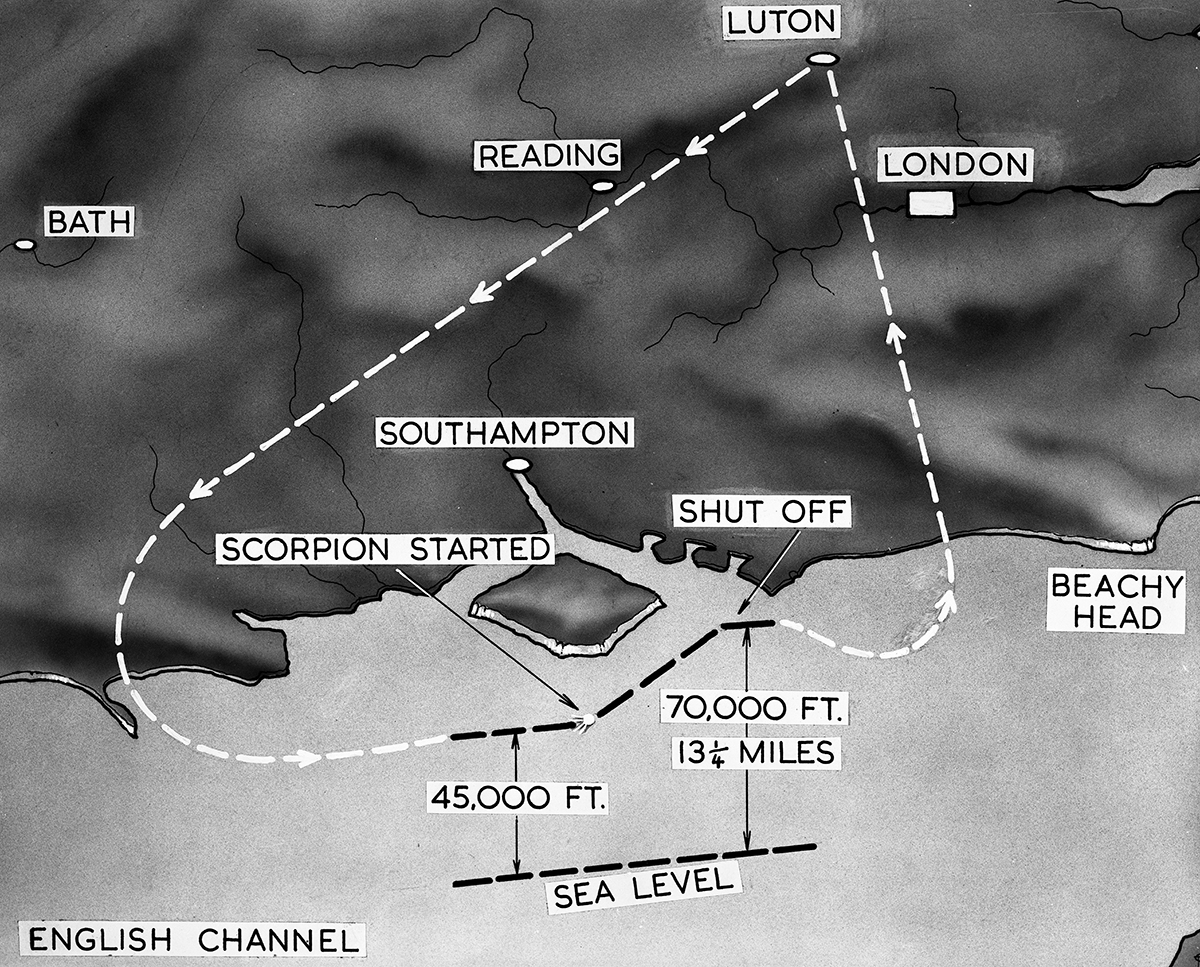
When it reached 70,000′, the Canberra was still climbing at a rate of some 8,000′ a minute, but the aircraft’s flying characteristics made it inadvisable for it to go higher. Randrup therefore levelled off, shut down the rocket engine and began his descent. The Canberra is a “sub-sonic” aircraft and has a comparatively low maximum safe flying speed. At 70,000′ its stalling speed and its maximum safe flying speed were separated by a mere 20 m.p.h. so Randrup had to keep within this slender margin to avoid disaster! Every foot of additional height would have made the position more perilous.
During the final stages of the climb, practically all the Canberra’s thrust came from the “Double Scorpion”. In that rarefied atmosphere, the two Rolls-Royce Avon turbojets could do little more than maintain the aircraft’s electrical and hydraulic services and cockpit pressurisation system.
Randrup and Shirley wore special clothing consisting of a partly pressurised helmet, and an inflatable jerkin to safeguard themselves against the potential hazard of a cockpit pressurisation failure. If a pressurisation failure did occur then the jerkin was automatically inflated. The clothing was designed in collaboration with the Royal Air Force Institute of Aviation Medicine in Farnborough, which had made a special study of high altitude flying problems.
Airborne testing of the “Double Scorpion” in the Canberra began on 20th May 1956. In the following 12 months, firings took place at steadily increasing heights, and when the development programme brought the Canberra within striking distance of the existing height record the decision was taken to make an official attempt to break it. The Royal Aero Club, as representatives in the UK of the Federation Aeronautique Internationale was asked to send a team of observers to Luton and, if the record was broken, to submit the figure to the F.A.I. for confirmation.
Most of the honour and glory of the record went to Randrup and Shirley, but it was the result of dedicated teamwork from the Napier staff at Luton F.D.E. It was also not in any way a stunt, but resulted directly from the work upon which they were engaged. The programme called for a flight to 70,000 ft., so to 70,000ft. they went – officially observed.

